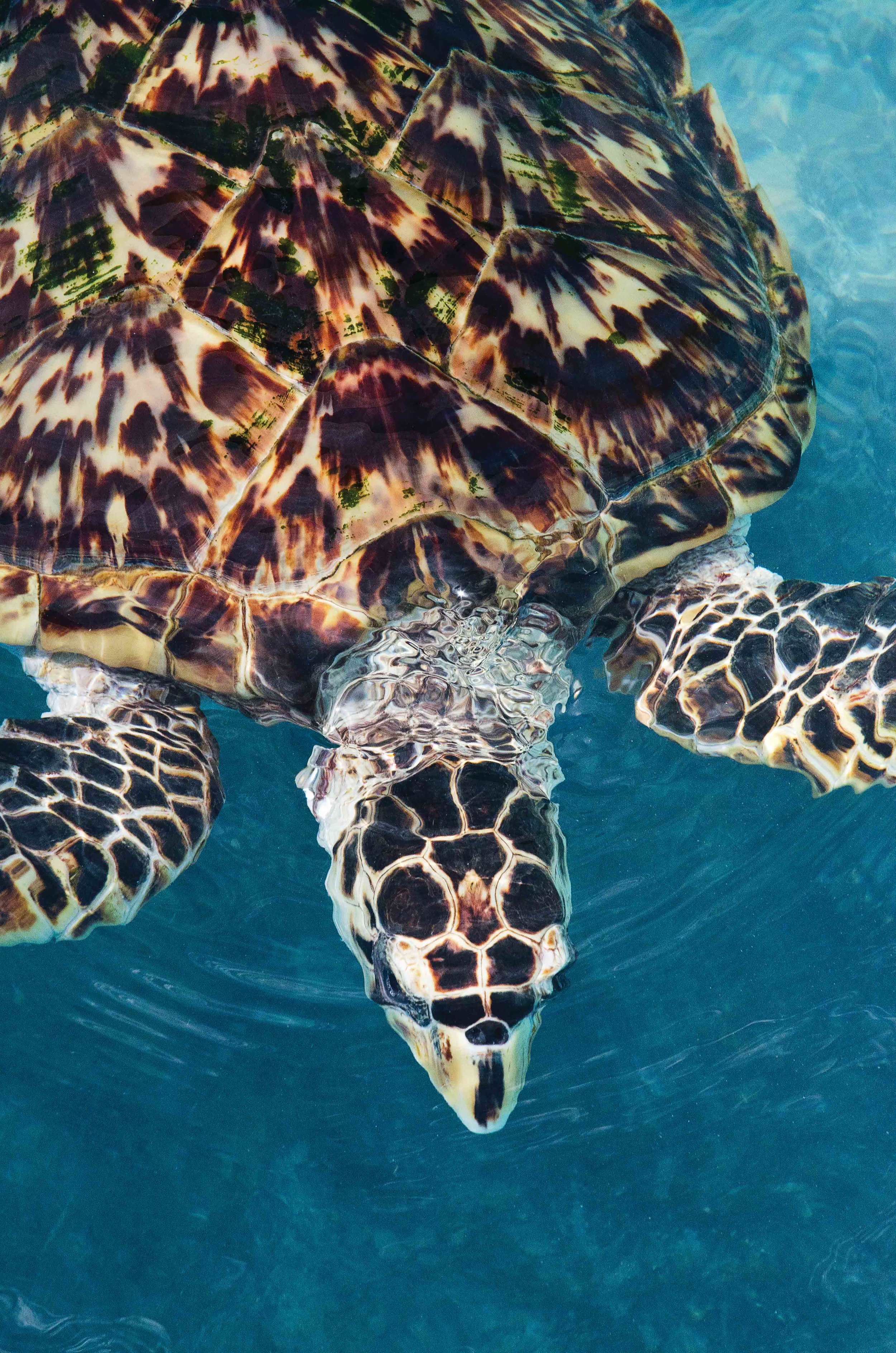Tortoiseshell: Too Rare to Wear
Hawksbill shell bracelets. © HAL BRINDLEY / TRAVELFORWILDLIFE.COM
By BRAD NAHILL and WALLACE J. NICHOLS
Hawksbill shell, commonly called tortoiseshell, has been a precious commodity for centuries, and countless millions of turtles have been killed to supply craft markets along trade routes spanning the globe (see “Trade Routes for Tortoise - shell” in SWOT Report, vol. III, pp. 24–25). The industry slowed significantly with the inclusion of the hawksbill in the Convention on International Trade in Endangered Species (CITES) in 1977 and with Japan’s 1992 ban on trade in bekko (the Japanese name for hawksbill shell). Market forces also played a key role in that many of the popular items formerly made from hawksbill (e.g., buttons, combs, eyeglass frames) are now more cheaply made from plastic—a rare example of how the proliferation of plastics has actually benefited sea turtles.
Although hawksbills now enjoy greater legal protections, the illegal trade in shell is still a grave threat to the species, both in Asia, where large seizures have recently been made in China and Vietnam, and in Latin America, where tortoiseshell is sold openly in markets and shops. Hawksbills remain critically endangered on the International Union for Conservation of Nature (IUCN) Red List of Threatened Species, and populations continue to decline, with the notable exceptions of hawksbills in the Caribbean, where Cuba (the former top exporter of hawksbill shell to Japan) has stopped hunting, and in the Eastern Pacific, where previously unknown nesting areas have been identified in El Salvador and Nicaragua. Nonetheless, a strong recovery for hawksbills in the Western Hemisphere seems unlikely if the local sale of hawksbill shell trinkets is not effectively curtailed.
The hawksbill turtle’s beautiful shell has been a precious commodity for centuries, contributing to the species’ global decline. © PETE OXFORD
A 2002 WIDECAST (Wider Caribbean Sea Turtle Conservation Network) survey of hawksbill shell products in seven Central American countries found significant evidence of sales in Honduras, Nicaragua, Costa Rica, and Panama and less evidence of sales in Belize, Guatemala, and El Salvador. In Nicaragua, researchers for a 2012 study by Fauna & Flora International visited 169 souvenir shops and vendors and found hawksbill shell products for sale at 90 percent of them, including 16,000 rings, bracelets, and other products sold primarily to American and European tourists.
Fundación Tortugas del Mar, a previous SWOT grant recipient in Colombia, recently published a five-year study of tortoiseshell sales in the Caribbean tourist destination of Cartagena. The study found that the market is controlled by a relatively small number of vendors (between 15 and 24, depending on the year) that sell 1,800 to 2,800 pieces per year. The Cartagena trade may be supplied in part by shell harvested in Venezuela, where a separate study done by the Grupo de Trabajo en Tortugas Marinas del Golfo de Venezuela documented significant hunting of hawksbills by the Wayuu indigenous people, who report selling carapaces for up to US$300 for export to Colombia.
In Cuba, sale of hawksbill shell is no longer allowed, yet tortoiseshell products are still sold openly in local markets. A World Wildlife Fund– Cuba study in 2014 surveyed five Cuban cities and found that hawksbill products were being sold in 69 percent (29 of 42) of souvenir shops. The highest totals were found in the cities of Trinidad and Havana, where 90 percent and 65 percent of shops, respectively, were found selling tortoiseshell.
Too Rare To Wear is a newly formed coalition that is tackling the issue of hawksbill shell sales to tourists in Latin America and the Caribbean. This coalition of more than 40 conservation and tourism groups from across the region is conducting a regionwide survey of more than 30 tourist sites in eight countries to further determine the availability of tortoiseshell products and to help direct future action. The campaign will also focus on outreach to travelers to teach them how to recognize and avoid hawksbill shell when shopping for souvenirs. Efforts will be targeted at the most critical destinations according to the results of the initial survey.
Too Rare To Wear will reach travelers through media outlets and social media with graphics, guides, and videos and by working with leading tour operators to educate clients who are heading to Latin America for their vacation. Travelers are encouraged to sign a pledge to avoid tortoiseshell products and the vendors who sell them. In addition, Too Rare To Wear will work with local partners to support outreach campaigns in tourist hotspots to reach travelers at local markets and tourism businesses.
Ultimately, a major factor in whether the market for tortoiseshell continues is the demand for the product. Few outreach efforts have focused on travelers as the source of the demand, but if that market can be reached effectively, the economic incentive to hunt hawksbills for their carapace can be significantly reduced.
This article originally appeared in SWOT Report, vol. 12 (2017). Click here to download the entire article as a PDF.


